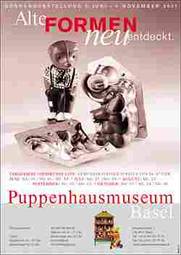
The history of chocolate began in 1528 when Cortez, who discovered Mexico, brought cocoa beans back to Europe. “Conching”* the chocolate made it smoother and easier to pour. Moulds were first produced in cental Europe at the end of the eighteenth century. Chocolate was poured by hand, in a time-consuming process, into tin moulds, whereas sulphur-based moulds with plaster coating or lead moulds were used for marzipan.
The Anton Reiche factory in Dresden was one of the largest mould producers with a collection of about 30,000 different moulds, some of which can be admired in the Doll’s House Museum. Motifs for Easter and Christmas as well as designs showing vehicles, trades, animals and musical instruments are presented and show how boundless the designers’ imagination was at the time. Live demonstrations reveal the forgotten art of pouring chocolate into moulds. The development from the historical moulds to present-day plastic ones can be retraced through this exhibit.
“Conching” is a refining process which Rodolphe Lindt (1855 – 1909) first noticed while processing chocolate over several days in a narrow mixing trough.
-
- 1
- 2